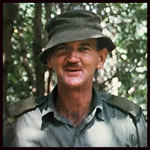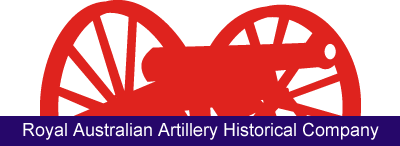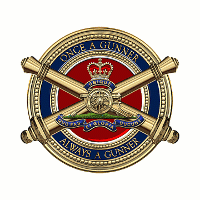 |
|
Arthur McDermott passed away at Berry, NSW on 27 June 2011 at 81 years of age. Born in Townsville, North Queensland on 15 November 1929, he entered the Townsville Grammar School for his Scholarship year in 1943. Arthur was a prefect in 1946 and Head Prefect in 1947, the year he also took out the Jessie Rowland Prize for Boarder Prefects. He was awarded Dux of the School in 1946.
Arthur excelled in extracurricular activities captaining the undefeated TGS First XIII in 1946 and receiving the Governor’s Cup for Rugby in 1946 and 1947. He was an outstanding cricketer taking six wickets for 113 runs and having an innings of 173 personal runs when defeating Townsville High in 1945, captaining the defeat of Brothers with a personal 7/150 and 33 runs in 1946, and taking 7/24 and 3/24 with 51 runs as captain of the team that defeated All Souls in 1947. In addition, he was a key member of the TGS tennis and athletics teams. |
When the Army Cadets were reformed at TGS in 1946, Arthur was appointed a Cadet Under Officer, a position he held for his final two years at school. This military grounding led to his desire for and subsequent successful entry into the Royal Military College, Duntroon in 1948.
In an environment where sport was an integral part of the physical fitness and team spirit of the College, Staff Cadet McDermott became a prominent member of the rugby and cricket teams. His wicket keeping prowess in particular was remarkable. Bill Silverstone (later Brigadier) recalls that Arthur would have been in the top four students of his class and must have been a contender for the King’s Medal for academic achievement. Unfortunately, he sustained a nasty compound fracture of the right arm playing fullback whilst at Duntroon.
Such was the need for officers in the Korean War, Lieutenant McDermott graduated into the Royal Australian Infantry in 1951 and, following reinforcement training, joined the 1st Battalion Royal Australian Regiment (1 RAR) as a platoon commander in Korea. Arthur moved to 2 RAR when the former unit completed its tour of duty.
He returned to Australia in late 1953, was reallotted to the Royal Australian Artillery and posted to 1st Field Regiment at George’s Heights, Mosman, NSW. These were busy times as the Army expanded through the compulsory National Service scheme and in 1954 Arthur was promoted captain and appointed adjutant of the 1st and then the 9th Heavy Anti-Aircraft Regiments in the Sydney area. Captain McDermott then returned to Holsworthy joining 105th Field Battery under Richmond ‘Dick’ Cubis (later Lieutenant Colonel MVO). Retired Lieutenant Colonel John Macpherson recalls that Arthur had lost none of his cricketing abilities and was a ‘very good’ member of the 1st Field Regiment XI.
In 1960 Arthur was selected to attend the British Army Staff College at Camberley, England. Acquitting himself well, he was promoted major and appointed to the Australian Army Staff in London for the next two years. This was a wonderful three years overseas for his wife Margaret and son Rodney to enjoy the social life of the College and then the opportunities to travel around the continent whilst posted in London. A baby daughter Angela was born in 1963 prior to the family’s return to Australia in 1964.
On return to Australia in March 1964, Arthur was appointed battery commander of 111th Light Anti- Aircraft Battery at Holsworthy. He was watching television on the evening of 28 April and learnt that his unit was to be deployed to protect the air base at Butterworth on Penang Island, Malaysia.However, by early afternoon the next day having visited Headquarters Royal Australian Artillery 1st Division (HQ RAA 1 Div), Major McDermott was able to announce officially to his battery that they would soon be deploying operationally overseas. On 1 May he flew out to Malaysia, returning on the 10th for a three-day pre-embarkation leave. Surprise visits by the Colonel Commandant RAA, the Minister for the Army, the Chief of the General Staff and the Commander 1st Division occurred before the battery embarked aboard the HMAS Sydney at Garden Island and sailed out of Sydney in the early hours of 25 May 1964.
The 111th had its first trial deployment on 9 July and by 12 August were on exercise with British units. From then onwards it was operational. At this time, families of the 111th did not accompany their menfolk to Butterworth. Just before Christmas 1964, Arthur completed his tour and handed over command to Major Bruce Topfer (later Lieutenant Colonel OBE). He returned to Australia, was reunited with his family and took up the staff appointment for personnel and logistics(DAA & QMG) on HQ RAA 1 Div in Sydney.
Eight months later when Australia was committing operational troops to the Vietnam War, Major McDermott was posted as the second-in-command (2IC) of the 1st Field Regiment RAA at Holsworthy. Though he was predominantly an air defence officer, Arthur was a good administrator and became an asset to Lieutenant Colonel RMC (Dick) Cubis’ unit. As the first regimental-sized RAA unit to deploy to Vietnam, there was much to be accomplished to bring it up to war establishment and equipment entitlements, and ready for overseas operations. This was a significant challenge for the 2IC, but Arthur’s experience deploying the 111th LAA Battery to Malaya had provided him with invaluable knowledge.
Major McDermott arrived in Vietnam with his unit on 22 May 1966. This was a turbulent time establishing the Australian base at Nui Dat, making a home for an artillery unit and taking under command the already present 105th Field Battery RAA and the 161st Field Battery Royal New Zealand Artillery. Cubis was a hard task master and a firm but fair man who kept Arthur on his mettle and working hard.
The first significant operational challenge occurred on 17 and 18 August when the now legendry Battle of Long Tan occurred. Following a night of counter mortar firing, the guns of the fledgling Task Force responded again to the beleaguered D Company 6 RAR’s calls for fire support. Ammunition began to dwindle but Arthur’s logistic experience ensured that the hungry weapons were kept fed by helicopter and truck loads of projectiles arriving from the Vung Tau munitions dumps.
A disagreement between the Task Force Commander and Dick Cubis led to the latter’s return to Australia in December 1966. Arthur stepped up to administrative commander of 1st Field Regiment until such time as his new commanding officer, Lieutenant Colonel DR (Don) Begg (later Major General OBE) arrived. Major McDermott’s seven months’ experience in Vietnam was then put to the test as he assisted Don Begg to settle into this operational environment.
The personnel from 4th Field Regiment RAA’s Headquarters Battery began replacing their counterparts in the First on 30 April 1967 and Arthur handed over to Major GM (Gerry) Salom (later Colonel). His tour of duty ended on 7 May and he returned to Australia to take up a personnel and logistics appointment (DAA&QMG) on HQ 1 Div in Sydney.
Two years later, Major McDermott returned to Holsworthy as the 2IC of 19th Composite Regiment RAA under the command of Lieutenant Colonel WAS (Blue) Whyte MC. The unit consisted of a mix of field, medium, locating and training batteries, the administration of which was a test even to the experienced McDermott. Nevertheless, he rose to the challenge which included a change of unit title to 8th Medium Regiment RAA. In 1970 he returned to HQ RAA 1 Div, this time as the air staff officer (GSO2). This was Major Arthur McDermott’s terminal posting and he hung up his spurs on 31 March 1975.In 1968, the McDermotts had purchased a house at Wahroonga, Sydney and lived there happily for some 20 years. As a second career, Arthur bought a sandwich shop on the beach at Dee Why and under his good management, it became a very successful business.
After that he moved to semi-retirement and assisted a mate who was establishing a neighbourhood shopping centre at Hornsby, north Sydney. Arthur was particularly helpful in the leasing areaBy 1988, the children had grown and flown the nest so full retirement was affected by Margaret and Arthur moving to Berry on the south coast of NSW. Here, they enjoyed their twilight years till Arthur passed away on 27 June 2011.
Vale Arthur McDermott—dedicated and loyal officer, professional administrator, caring family man, but always a proud Gunner. Posted to the Great Gun Park up above at 81 years of age.
|


